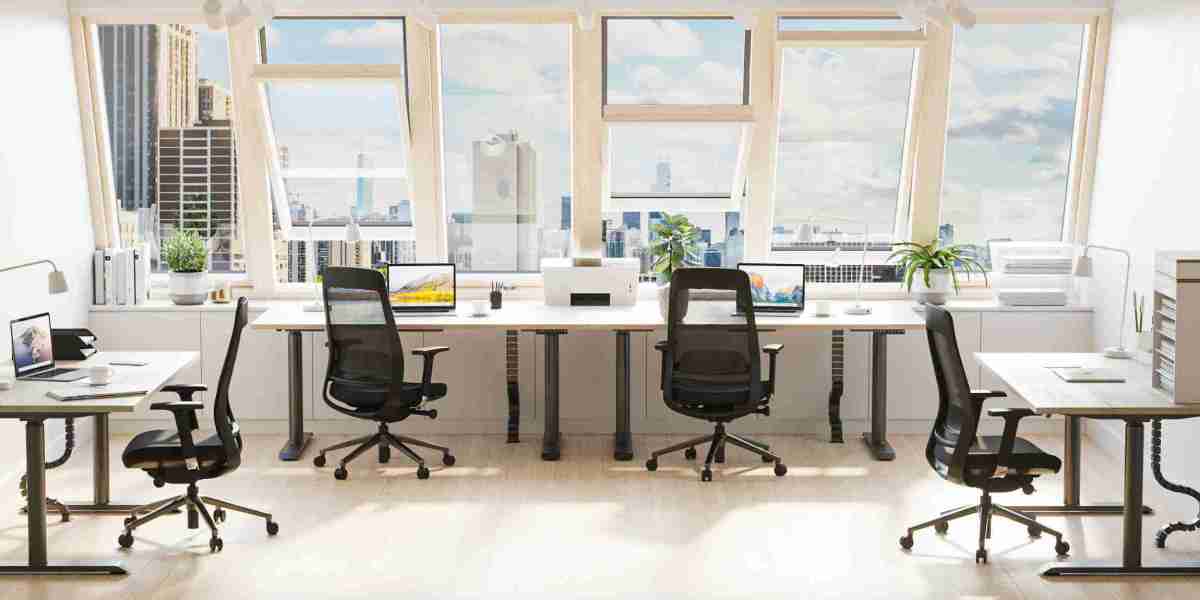Workplace discomfort is a major concern for employees and employers alike. Discomfort in the workplace can lead to decreased productivity, increased absenteeism, and even long-term health issues. Identifying and addressing the common causes of workplace discomfort can improve employee well-being and overall business performance.
This article explores the primary factors that contribute to discomfort in the workplace and provides insights on how to mitigate them. Additionally, we will discuss the role of furniture procurement in creating an ergonomic and comfortable work environment.
1. Poor Ergonomics
Improper Desk and Chair Setup
One of the leading causes of workplace discomfort is poor ergonomics. Many employees experience back pain, neck strain, and wrist discomfort due to improper desk and chair setups. An ergonomically designed workspace can significantly reduce these issues.
Inadequate Furniture Procurement
Employers must focus on furniture procurement to ensure that employees have access to ergonomic chairs, height-adjustable desks, and proper lighting. Investing in quality ergonomic furniture can reduce discomfort and prevent work-related musculoskeletal disorders.
2. Inappropriate Office Temperature
Excessive Heat or Cold
Temperature fluctuations can cause discomfort and distract employees from their tasks. If an office is too hot, employees may feel lethargic, while extreme cold can cause stiffness and decreased productivity.
Poor Ventilation
A poorly ventilated office can lead to stale air, making employees feel fatigued and unwell. Employers should ensure proper air circulation and invest in climate control solutions to maintain a comfortable working temperature.
3. Uncomfortable Lighting
Insufficient Natural Light
A lack of natural light in the workplace can cause eye strain and fatigue. Employees who work in dimly lit environments often experience headaches and decreased focus.
Harsh Artificial Lighting
Fluorescent lighting can lead to discomfort by causing glare and eye irritation. Employers should invest in adjustable lighting solutions and ensure that workstations are well-lit to enhance comfort and productivity.
4. Noise Pollution
Open Office Distractions
Open office layouts are popular but can contribute to excessive noise levels, leading to decreased concentration and stress. Employees often struggle to focus when exposed to constant conversations and office equipment sounds.
Lack of Soundproofing
Employers should consider noise-canceling measures such as soundproofing materials, designated quiet zones, and noise-canceling headphones to create a more comfortable work environment.
5. Poor Posture
Sedentary Work Habits
Sitting for long hours without movement can cause discomfort and lead to long-term health problems such as obesity, cardiovascular issues, and chronic back pain. Encouraging employees to take regular breaks and stretch can help alleviate these problems.
Lack of Ergonomic Accessories
Ergonomic accessories such as lumbar support cushions, footrests, and standing desks can help employees maintain proper posture. Employers should prioritize furniture procurement that includes these accessories to promote better posture.
6. Inadequate Break Areas
Lack of Rest Spaces
Employees need a comfortable space to take breaks and recharge. A poorly designed break room can discourage employees from taking necessary rest periods, leading to burnout.
Uncomfortable Seating
Break areas should be equipped with comfortable seating arrangements. Employers should focus on furniture procurement for break rooms that includes relaxing chairs and couches to enhance employee well-being.
7. Psychological Stress
High Workload and Pressure
Work-related stress is a significant contributor to workplace discomfort. Employees who experience high workloads and tight deadlines often suffer from anxiety and burnout.
Lack of Workplace Support
A lack of support from management and colleagues can lead to emotional discomfort. Employers should foster a supportive work environment through open communication and stress management initiatives.
8. Poor Office Layout
Crowded Workspaces
Cramped office spaces can cause physical discomfort and make it difficult for employees to move around freely. A cluttered workspace can also increase stress levels.
Lack of Privacy
Employees need privacy to focus on their tasks effectively. Providing private workspaces, partitions, and quiet rooms can help enhance workplace comfort.
9. Unhygienic Work Environment
Dirty Workspaces
A dirty office can contribute to discomfort and health issues. Employers should ensure regular cleaning and maintenance to promote a hygienic work environment.
Poor Sanitation Facilities
Lack of clean restrooms and handwashing facilities can lead to discomfort and dissatisfaction among employees. Regular maintenance and adequate sanitation supplies are essential.
Conclusion
Workplace discomfort stems from various factors, including poor ergonomics, inadequate lighting, excessive noise, and psychological stress. Employers must take proactive measures to improve the work environment by focusing on ergonomic furniture, climate control, proper lighting, and a supportive work culture.
A key aspect of creating a comfortable workplace is furniture procurement. Investing in quality ergonomic furniture and accessories can significantly reduce discomfort and enhance productivity. By addressing the common causes of workplace discomfort, employers can create a healthier and more enjoyable work environment, leading to better employee satisfaction and overall business success.
A well-planned workplace can prevent many discomfort-related issues, making employees feel valued and motivated. Companies like Pacific Ergonomics provide excellent ergonomic solutions to enhance workplace comfort and well-being.
FAQs
How can I reduce discomfort while working at a desk?
To reduce discomfort, ensure your desk and chair are ergonomically set up, take regular breaks, and use ergonomic accessories like wrist rests and footrests.
Why is lighting important in the workplace?
Proper lighting prevents eye strain, reduces headaches, and enhances productivity by creating a more comfortable work environment.
How does furniture procurement impact workplace comfort?
Investing in ergonomic and high-quality furniture ensures employees have proper support, reducing strain and discomfort while working.
What role does office temperature play in employee comfort?
Maintaining a balanced temperature prevents employees from feeling too hot or cold, improving focus and overall work efficiency.
How can employers address noise pollution in the office?
Employers can reduce noise pollution by implementing soundproofing measures, providing quiet zones, and allowing the use of noise-canceling headphones.




